Entrevista a Roberto Candiani de Candiani Films
Nos da muchísimo gusto poder publicar esta entrevista con Roberto Candiani. Director y Productor de Candiani Films.
Candiani Films (Ciudad de México) es una casa productora que desde sus inicios se ha mantenido como una de las empresas líderes en la rama de Vídeos Corporativos y Vídeos de Eventos Sociales.
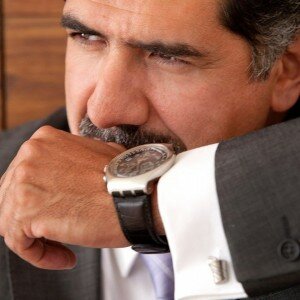
Siempre innovando en la forma de contar historias, de transmitir mensajes, utilizando siempre las técnicas más novedosas en todas sus producciones.
Su Director Roberto Candiani ha sido productor y director en infinidad de proyectos como cortometrajes, vídeos corporativos y publicitarios, spots comerciales para cine y TV, y eventos sociales de alto nivel. También ha participado como docente a nivel universitario, conferencista en diversos foros y agrupaciones del medio; nacionales e internacionales, además de jurado en concursos de cine, video y televisión.
Multi-year Creative Excellence Award Winner Roberto Candiani takes you on an inspirational journey of creativity, risk-taking, and breathtaking moments that his company has experienced to tell the many Stories they’ve been hired to film. With over 20 years of experience in the video industry, “Candiani” has made a name among the most important and prestigious production companies in Mexico in Corporate, Social and Advertising video. Included among his many awards: Best Short Film at the Phoenix International Film Festival in Arizona, “Pantallas de Cristal” awards, Weva Creative Excellence Gold Awards in Corporate.
It is truly an honor for us to publish this interview which describes a little about Candiani, his work, as well as his last proyect for Phillips “75 Years improving the lives of the people of Mexico”. English translation at end of page.
PROYECTO PHILLIPS:
Corte Final Philips Director from Candiani Films on Vimeo.
¿CUÁL FUE TU ROL EN ESTE PROYECTO?
En los proyectos de Candiani Films me involucro en todos los procesos. Algunos como la dirección obviamente en su totalidad pero otros como la producción y postproducción; dando instrucciones precisas e involucrando a todos mis colaboradores pues creo que los proyectos deben de ser compartidos ya que son trabajos en equipo y en equipo se comparten las responsabilidades y también los logros.
Quiero aclarar que la supervisión del director en cada proceso es indispensable ya que ante los clientes y ante los ojos de los espectadores el único responsable de lo que se ve en pantalla es el Director.
El cliente o los espectadores jamás tomarán en cuenta las dificultades o problemas que tuviste para realizar una toma, ellos sólo se enfocan en lo que ven y en lo que sienten y la crítica siempre será enjuiciada hacia el director.
En éste proyecto me involucré desde la concepción del mismo. Comenzando desde el concurso; ya que éramos tres productoras las invitadas y quienes teníamos que presentar la mejor propuesta creativa, con los mejores tiempos y con el presupuesto adecuado.
¿CUÁLES FUERON LOS RETOS A LOS QUE TE ENFRENTASTE EN ÉSTE PROYECTO?
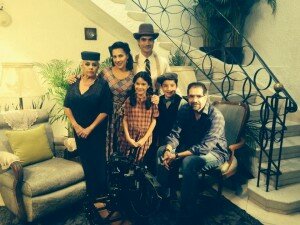
Tengo que confesarte que varios. El concepto era claro, 75 años de celebración de Philips en México, algo motivador, con sentido de pertenencia para los colaboradores e involucrando los tres negocios principales de la compañía; consumo, iluminación, y cuidado de la salud.
El primer reto fue conseguir la información, la compañía no contaba con lo necesario, ni con archivos históricos ó fotográficos; pues muchos de estos materiales se perdieron durante el cambio de oficinas corporativas de Vallejo a Interlomas.
Entonces tuvimos que buscar la información por nuestra cuenta.
El segundo reto fue realizar una propuesta creativa, pero con un presupuesto competitivo.
Después de que nos dijeron que éramos la productora elegida, me junté con mi guionista José Manuel Valiñas y agendamos una cita con los directivos y personal de la empresa que tenían varios años de antigüedad, para escuchar su experiencia. De este ejercicio reunimos los datos más importantes y encontramos el hilo conductor del video. Conforme avanzamos en el guión, nos dimos cuenta de que al contar la historia de la compañía estábamos recapitulando la historia contemporánea de México. Fue impresionante darnos cuenta de cómo Philips ha tocado prácticamente a la mayoría de los mexicanos.
De esta manera presentamos el guión literario y la propuesta creativa. La idea fue resaltar por medio de viñetas los aspectos más importantes de esa historia, de nuestra historia en México y de las innovaciones que cambiaron la vida de tantas generaciones. Una vez aprobado este concepto se hizo un ajuste al presupuesto que fue tomado positivamente por la empresa y se aprobó.
Ahí estaban esas imágenes que nos revelaban un pasado; un pasado siempre positivo en las familias mexicanas y en las que invariablemente Philips ha contribuido innovando desde siempre.
Los radios de bulbos que se utilizaban, cuando tener televisión no era común y eran el motivo por el que se reunían las familias para escuchar en diferido las narraciones de los partidos de fútbol o cuando había alguna noticia importante, como el anuncio del final de la Segunda Guerra Mundial anunciada por Winston Churchill, escena que decidimos dada su importancia histórica y emocional, integrarla al principio del guión en nuestro video; así como el histórico alunizaje del hombre en la luna transmitido a través de la televisión en los años sesenta.
En la realización de ésta escena tuvimos varios contratiempos: la televisión que utilizamos fue reparada y logramos conectar el video del alunizaje y todo funcionó perfectamente, pero justo antes de iniciar la toma el aparato se fundió y en el momento tuvimos que recurrir al blue screen para insertar posteriormente en postproducción la toma. Luego el vestido de época que utilizó la modelo se rompió con sus tacones y éstos incidentes nos retrasaron mucho la producción.
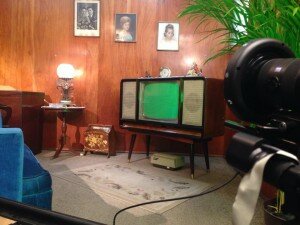
Los retos en general fueron conseguir los equipos y arreglarlos para que funcionaran y parecieran nuevos, radios, televisiones de tres épocas, electrodomésticos, refrigeradores, reproductores de CD y DVD, ventiladores y ultrasonidos. También recurrimos a periódicos de la época para reproducirlos integrando noticias de Philips.
Otro punto muy importante fue el casting, realizado por Roberto Orozco quien nos ayudó a seleccionar a los actores y crear las familias. Posteriormente se realizaron propuestas de maquillaje, peinado y vestuario con Myriam Guerrero. Y finalmente conseguir locaciones de la época o adaptarlas y decorarlas. Aquí, mi amigo Alfonso Moreno Buzzo estuvo a cargo haciendo toda la dirección de arte, junto con la ardua tarea de conseguir los equipos.
Organizar estas escenas me llenaban de emoción. Una vez con los equipos Philips y los actores elegidos para cada escena me enfoqué en encontrar en cada locación la forma de resaltar la marca y los equipos. Después se diseñó la iluminación y posteriormente me enfoqué en las acciones y expresiones de los roles de cada actor.
Orquestar proyectos como éste y obtener los resultados esperados es lo que le da sentido a mi profesión, a mi hobbie y a mi vida.
El encargado de la Producción junto conmigo, fue Francisco Amezcua. Para los juegos olímpicos de 1968 conseguir el stock original de las luminarias Philips en el Estadio Universitario requirió de una búsqueda muy meticulosa. Philips en ese entonces era la punta de lanza en iluminación y hoy 46 años después se mantiene como líder en esa rama.
En los años 70 vino todo el cambio en el estilo de vida, la música, la moda y el baile. En particular esta escena me recordó mucho mis primeros pasos cuando de muy chico comenzaba a editar música en las cassetteras Philips.
El mayor reto para la época de los 80, fue conseguir la cocina con el look y el display adecuado pues ya existen pocas cocinas con esas características, además de que las que encontrábamos eran sumamente pequeñas.
En fin cada viñeta con sus respectivas historias.
¿QUE NOS PUEDES COMENTAR SOBRE EL DISEÑO DE AUDIO Y LA MÚSICA.?
Mónica: Primero hice una cama de música comercial como guía para posteriormente sustituirla con música de galería con derechos pagados. Buscaba que esta música tuviera el mismo ritmo y feeling que la comercial.
La parte más complicada del diseño de audio, fue la del inicio del video en la animación del universo, porque se requería de mucho más trabajo para encontrar los momentos históricos importantes y los sonidos de apoyo. Todo el audio del video se diseñó en sistema protools HD.
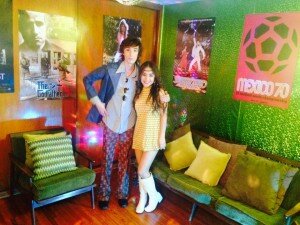
¿QUÉ TÉCNICAS DE PRODUCCIÓN Y POSTPRODUCCIÓN UTILIZASTE?
En cuanto a producción, utilizamos Motion Control para hacer aparecer los equipos en cada lugar ya que todas estas tomas llevan movimiento.
Nos apoyamos en su mayoría con equipo DSRL Sony con lentes Carl Zeiss y un slider/grúa, iluminación Arri con 4 cabezas de 650 watts y lámparas de leds de 4000 watts.
Para la post producción Final Cut X, equipo Maya, Cinema4D y After Effects. Y la corrección de color tuvo varios procesos y se utilizaron diferentes filtros.
¿NOS PODRÍAS PLATICAR SOBRE LOS PREMIOS QUÉ TUVISTE CON ÉSTE VIDEO?
Desde que estábamos en la investigación y la elaboración del guión, el escritor José Manuel Valiñas me comentó: “Roberto este video es para ganar premios estoy seguro de eso” Y bueno decidimos meterlo para concurso en el Festival Pantalla de Cristal que organiza la revista Telemundo, Canal 100 y Expo Cine Video y Televisión. Este concurso es el más importante de México y premia las producciones mexicanas en diversas categorías: películas, cortometrajes, comerciales, documentales y videos corporativos.
Candiani Films, fue nominado en ocho categorías con este video, de las cuales mencionaré a continuación: Mejor Video Corporativo, Mejores Valores de Producción en Pantalla, Mejor Director, Mejor Guión y Concepto Creativo, Mejor Edición, Mejor Color, Pintado y Retoque, Mejor Banda Sonora, Mejor Diseño de Audio, y Mejor Dirección de Arte. Y de las cuales ganamos en cuatro.
http://www.revistapantalla.com/festival/ganadores/2014/corporativo.php
Reconozco y agradezco el compromiso, la entrega y el profesionalismo de todo el crew. Y la muestra de todo este esfuerzo para mí; es la satisfacción de haber ganado el premio al Mejor Director, algo que cerró con broche de oro tantos meses de trabajo y dedicación.
¿PLATÍCANOS UN POCO DE TUS FUTUROS PROYECTOS?
Este año 2015 inicio con mi proyecto más importante. Mi largometraje, estoy trabajando en la sinopsis.
Image Credits: Roberto Candiani
Interview/English translation by: Monica Pucciarelli Assitant Editor/Punto Magazine
What Was Your Role In This Project?
In Candiani Film projects I get involved in all processes. Some, in their totality obviously, others in production and postproduction; giving precise instructions and involving all my staff, as I believe that projects should be shared as they are works which are completed as teamwork and as a team, responsibilities and achievements are shared.
I want to clarify that the supervision of the director in each process is essential because to customers and in the eyes of the audience, the solely responsibility for what is seen on screen is the Director.
The customer or viewers will never take into account the difficulties or problems you had to perform a take, they only focus on what they see and what they feel and the criticism always will fall on the director.
In this project I was involved from the conception of it. Starting from the competition; since we were three production companies who were invited and who had to present the best creative proposal, with the best length of time and the appropriate budget.
What were the challenges you faced In this project?
I have to confess there were many. The concept was clear, celebrating 75 years of Philips in Mexico, something encouraging, with a sense of belonging for collaborators which involved the three main businesses of the company; consumption lighting and healthcare.
The first challenge was to to get the information, the company did not have the necessary, nor historical archives since many of these materials were lost during the change of corporate offices from Vallejo to Interlomas.
So we had to find the information ourselves.
The second challenge was to undertake a creative proposal, but with a competitive quote.
After being told that we were the chosen production company I got together with my screenwriter Jose Manuel Valiñas and scheduled an appointment with managers and staff of the company who had several years working in the company to hear their experiences. Of this exercise we gathered the most important data and found the guiding thread for the video.
As we move forward into the script, we realized that in telling the story of the company, we were also recapitulating the contemporary history of Mexico. It was amazing to realize how Philips has touched practically the majority of people of Mexico.
Thus in this way we presented the literary script and creative proposal. The idea was to highlight by way of vignettes, the most important aspects of that history, our history in Mexico and of the innovations that changed the lives of many generations. Once this concept was approved, an adjustment to the budget was made which was taken positively by the company and was approved.
There stood those images that showed us a past; a past always positive in Mexican families and in which Philips has contributed to,invariably innovating ever since.
The radios with bulbs that were used when having television were not common and was the reason why families gathered to listen delayed narratives of football matches, or when there was some important news, such as announcing the end of the WWII announced by Winston Churchill, a scene that given its historical and emotional importance, we decided to integrate at the beginning of script in our video; as well as the historic landing of man on the moon transmitted through the television in the sixties.
In carrying out this scene we had several setbacks: the television that we used was repaired and we managed to connect the video of the moon landing and it worked perfectly, but just before starting the take, the apparatus blew out and in the moment we had to resort to the blue screen to then insert in post production. Then the vintage dress which the model used tore with her heels and these incidents much delayed our production.
The challenges were generally obtaining equipment and fixing them to make them work and look like new, radios, televisions from three different eras, appliances, refrigerators, CD and DVD players, fans and ultrasounds. We also resorted to newspapers of the period to reproduce integrating news about Philips.
Another important point was the casting, conducted by Roberto Orozco who helped select the actors and create families. Subsequently proposals for makeup, hair and clothing were conducted with Myriam Guerrero. Finally to find the period locations or adapt them and decorate. Here, my friend Alfonso Moreno Buzzo was in charge doing all the art direction, along with the arduous task of obtaining the equipment.
Organizing these scenes filled me with emotion. Once we had the Philips equipment and the actors chosen for each scene, I focused on finding in each location, a way of highlighting the brand and equipment. Later lighting was designed and was subsequently I focused on the actions and expressions of the roles of each actor.
Orchestrating projects like this and getting the desired results is what gives meaning to my profession, my hobby and my life.
The person in charge of Production along with me, was Francisco Amezcua. For the 1968 Olympics getting the original stock of the Philips lighting in the University Stadium, required a very meticulous research. In that time, Philips was the spearhead of lighting and today 46 years later remains the leader in the industry.
In the 70s came all the changes in lifestyle, music, fashion and dance. In particular this scene reminded me of my first steps when very young I began editing music in Philips cassettes..
The biggest challenge for the era of the 80’s, was to get the kitchen with the look and the right display since there are very few kitchens with these characteristics. Besides finding them, we also found they were extremely small.
In short each frame with their respective histories.
What can you tell us of the Design of Audio and Music?
Monica: First I made a selection of commercial music as a guide, to later replace it with a music gallery paying all copyrights.. I was looking that this music have the same rhythm and feeling as the commercial.
The most complicated part of the audio design was the the start of the video, the animation of the universe, because it required a lot more work to find the important historical moments and sounds to back it up. All audio of the video was designed in Protools HD system.
What Production and Post Production techniques did you use?
In terms of production, we used Motion Control to make the equipment appear in each place since all these takes involve movement.
We relied in its majority, use of DSRL equipment. Sony with Carl Zeiss lenses and a slider / crane, lighting Arri with 4 heads Arri 650-watt and LED lamps of 4000 watts.
For Post production Final Cut X, Maya, Cinema4D and After Effects team. And color correction had several processes and different filters were used.
Could you talk about the awards received with this video?
From when we were in research and development of the script, the writer José Manuel Valiñas told me: “Roberto this video is to win prizes I’m sure of that,” And well, we decided to send it to competition at the Crystal Screen Festival organized by the magazine Telemundo , Channel 100 and Expo Cine Video and Television. This competition is the most important of Mexico and awards Mexican productions in various categories: films, short films, commercials, documentaries and corporate videos.
http://www.revistapantalla.com/festival/ganadores/2014/corporativo.php
I recognize and appreciate the commitment, dedication and professionalism of the entire crew. And this demonstration of all this effort for me; is the satisfaction of having won the award for Best Director, which closed with a flourish, the many months of work and dedication.
Tell us of your future projects?
This 2015 I start with my most important project. My film, I’m working on the synopsis.
https://puntomagazine.net/?p=9774Entrevista a Roberto Candiani de Candiani Filmshttps://puntomagazine.net/wp-content/uploads/2015/05/candiani_593248294042596_632902251_n.jpg https://puntomagazine.net/wp-content/uploads/2015/05/candiani_593248294042596_632902251_n-150x150.jpg EntrevistasVideografosCandiani Films,cinematografia,Proyecto Phillips,Roberto Candiani,VideografiaNos da muchísimo gusto poder publicar esta entrevista con Roberto Candiani. Director y Productor de Candiani Films. Candiani Films (Ciudad de México) es una casa productora que desde sus inicios se ha mantenido como una de las empresas líderes en la rama de Vídeos Corporativos y Vídeos de Eventos Sociales. ...Punto Magazine [email protected]EditorPunto Magazine
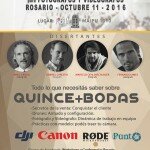
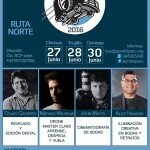
Leave a Reply